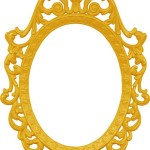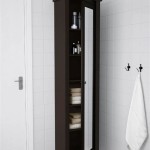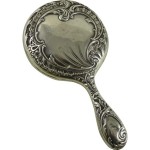How to Hang a Heavy Mirror on the Wall
Hanging a heavy mirror on the wall can seem daunting, but with the right tools and techniques, it's a manageable task. Heavy mirrors, particularly those made with thick glass, can cause significant damage if not properly supported. This article will guide you through the process, ensuring your mirror hangs securely and beautifully.
1. Assess the Wall and Mirror
Before you begin hanging, it's crucial to understand the type of wall you're working with and the weight of the mirror.
Wall Type:
- Drywall: The most common type of wall, drywall requires specialized fasteners for hanging heavy objects.
- Plaster: Plaster walls are typically stronger than drywall but still need appropriate support for heavy items.
- Concrete or Brick: These walls are the strongest but require specialized drilling techniques and fasteners.
Mirror Weight: Carefully weigh the mirror to determine the appropriate mounting solution.
Additional Factors:
- Location: Consider the location of the mirror. Will it be placed over a stud or in between studs? This will affect the type of support needed.
- Existing Wall Hangings: Check if the wall already has any existing holes or mounts that could interfere with the placement of the mirror.
2. Gather the Necessary Tools and Materials
Having the right tools and materials is crucial for a safe and successful installation.
- Stud Finder: Essential for locating wall studs, which provide the strongest support for hanging heavy items.
- Level: Ensures that the mirror is perfectly straight.
- Pencil: For marking the wall where the mirror will be placed.
- Measuring Tape: For accurate measurements of both the mirror and the wall.
- Drill: Necessary for drilling pilot holes, especially in drywall or concrete.
- Appropriate Fasteners: Choose fasteners that can securely hold the weight of the mirror.
- For drywall: Heavy-duty toggle bolts, molly bolts, or drywall anchors.
- For plaster: Screw-in anchors or heavy-duty drywall anchors.
- For concrete or brick: Concrete anchors or masonry drill bits with appropriate screws.
- Mirror Hanging Kit: These kits often include wire hangers, D-rings, and mounting brackets specifically designed for heavy mirrors.
- Safety Glasses and Gloves: Recommended for safety while working with tools and heavy objects.
3. Determine the Installation Method
The method of hanging a heavy mirror depends on the type of wall, the mirror's weight, and your preference.
- Hanging with Wire: A common method for heavy mirrors.
- The wire hangs from the top of the mirror and is attached to D-rings or hooks on the back of the mirror.
- The wire is then secured to two mounting brackets on the wall.
- Direct Mounting: Heavy mirrors can also be mounted directly to the wall using heavy-duty screws and anchors.
- This method provides a more secure and stable mounting solution.
- It requires drilling holes in the back of the mirror and mounting it directly to the wall.
- Hanging Systems: For very large or heavy mirrors, specialty hanging systems might be necessary. These systems often include adjustable tracks and brackets to provide additional support and stability.
It's essential to choose a method that suits the weight and size of the mirror and the strength of the wall.
4. Prepare the Wall and Install the Mounting Brackets or Hooks
Once you've decided on the hanging method, carefully prepare the wall for installation.
- Mark the Wall: Use the level and pencil to mark the wall where the mirror will be hung. Ensure the markings are level and accurately positioned.
- Find Studs: If using wall studs for support, locate the studs using a stud finder and mark their positions.
- Drill Pilot Holes: If necessary, drill pilot holes in the wall to ensure easy installation of screws or anchors.
- Install Mounting Brackets: Using the appropriate screws and anchors, install the mounting brackets or hooks at the marked positions on the wall. Make sure they are secure and able to support the weight of the mirror.
5. Install the Mirror
With the mounting brackets secure, carefully hang the mirror.
- Wire Hangers: If using wire hangers, attach the wire to the D-rings or hooks on the back of the mirror. Slowly lift the mirror and hook the wire onto the mounting brackets on the wall.
- Direct Mounting: If mounting directly, carefully align the mirror on the wall and secure it with the appropriate screws.
Once the mirror is hanging, ensure it's level before making any final adjustments. Use the level to check for any tilting or crookedness.
6. Safety Precautions
Hanging a heavy mirror involves inherent risks. It is essential to prioritize safety throughout the process.
- Use Safety Glasses: Always wear safety glasses when drilling or hammering.
- Wear Work Gloves: Protect your hands from potential cuts or scrapes.
- Get Help: If the mirror is too heavy to lift alone, get assistance from another person.
- Proper Equipment: Use only appropriate tools and fasteners for the job.
- Take Breaks: Take breaks if you start to feel fatigued, and don't hesitate to stop if you feel unsafe.

How To Hang A Large Or Heavy Mirror

A Better Way To Hang Heavy Mirror Hanging Brackets
How To Hang A 100 Pound Mirror On Drywall Quora

How To Hang A Heavy Mirror The Home Depot

How To Hang A Very Heavy Picture Or Mirror The Best

How To Hang A Heavy Mirror With Pictures Wikihow

How To Hang A Heavy Mirror C R F T

How To Hang A Heavy Mirror

How To Hang A Heavy Mirror With Pictures Wikihow

Hanging Heavy Mirror On Plaster Walls 6 Steps With Pictures Instructables








